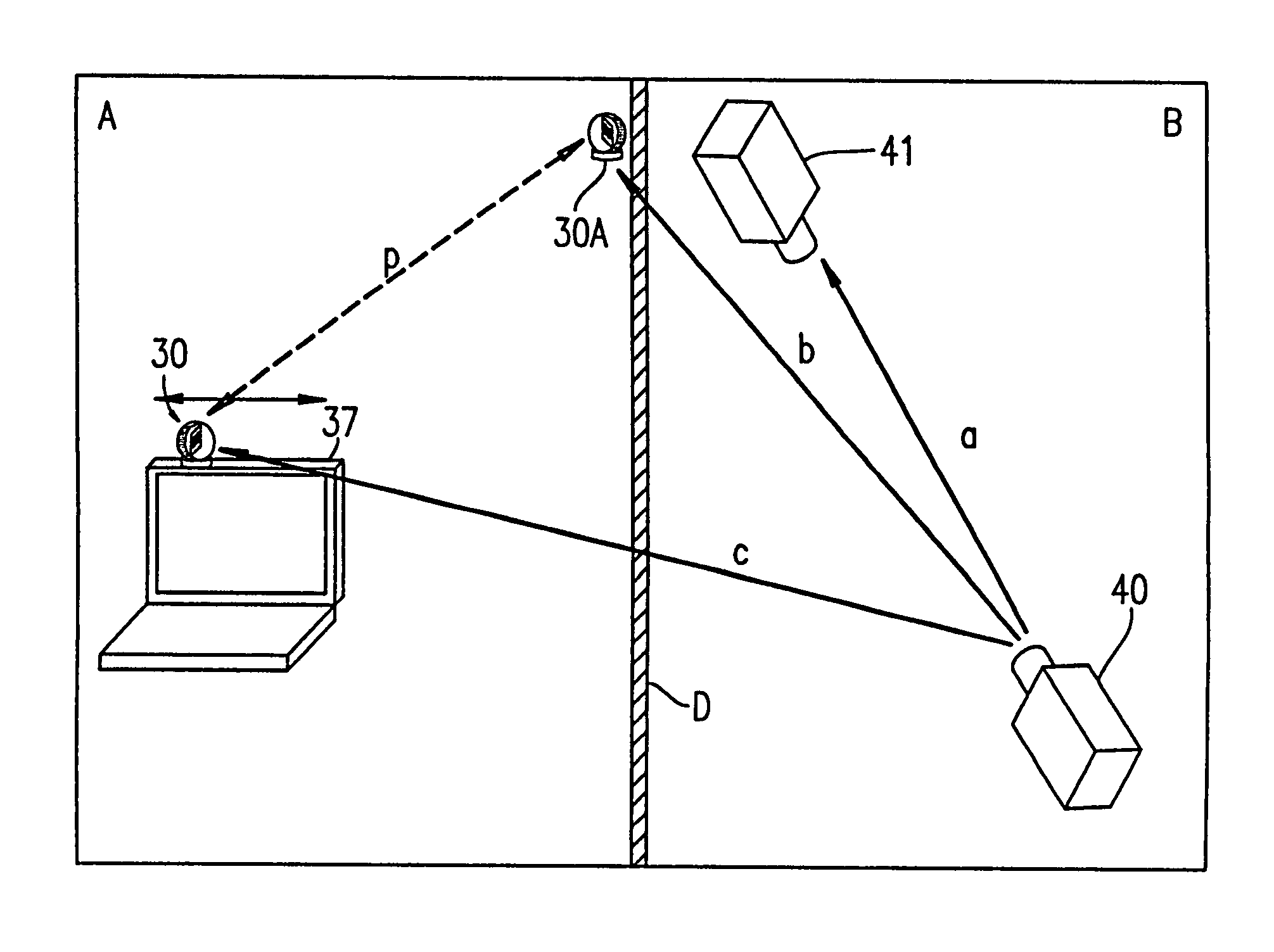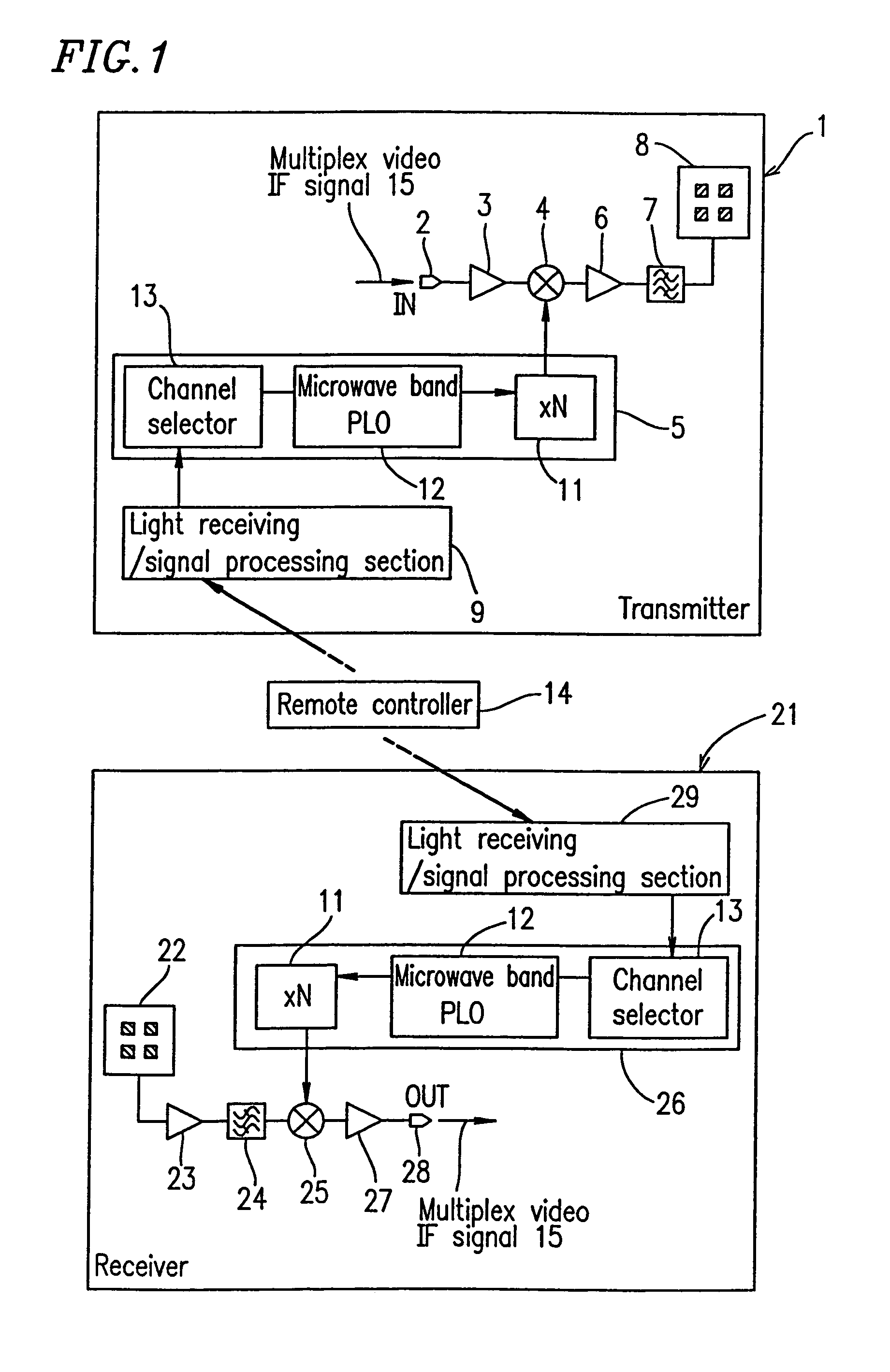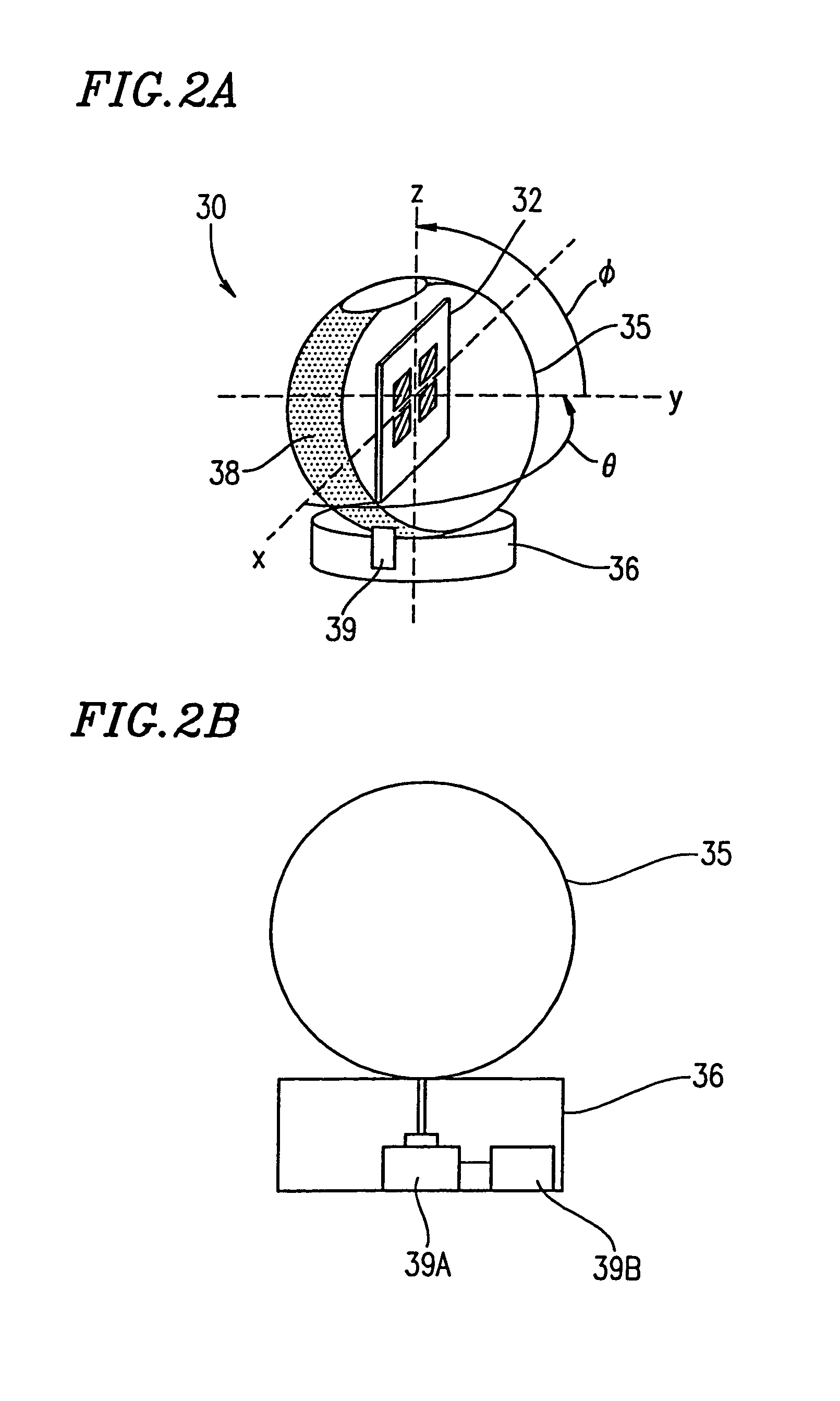Radio-frequency radiocommunication apparatus
a radiocommunication apparatus and radio frequency technology, applied in the direction of reradiation, collapsible antenna means, instruments, etc., can solve the problems of radio interference in the receiver, large manpower, and the inability of conventional radiocommunication apparatuses to transmit/receive radio waves at a level higher, so as to achieve the effect of reducing the size and weight of the transmitting/receiving device and facilitating the change of the transmission route of the radio signal
- Summary
- Abstract
- Description
- Claims
- Application Information
AI Technical Summary
Benefits of technology
Problems solved by technology
Method used
Image
Examples
embodiment 1
[0052]FIG. 1 is a block diagram showing radio-frequency radiocommunication apparatus according to embodiment 1 of the present invention. In embodiment 1, a milli-wave band video multiplex transmission which is performed inside a house is described.
[0053]The milli-wave band video multiplex transmission is generally used for transmitting data of the video media such as ground wave television broadcasting, satellite TV broadcasting, CATV, etc. In embodiment 1, a radio wave signal of the ground wave television broadcasting, an intermediate frequency signal of the satellite TV broadcast, and a transmission signal of the CATV are each directly up-converted to a milli-wave band signal at the transmitter side, and the transmitter outputs the milli-wave band signal as it is. On the other hand, a milli-wave band signal is received by a receiver and down-converted into a radio wave signal of the ground wave television broadcasting, a intermediate frequency signal of the satellite TV broadcasti...
embodiment 2
[0070]FIGS. 2A, 2B, 2C, and 2D show a radio-frequency radiocommunication apparatus according to embodiment 2 of the present invention. FIG. 2A is a perspective view showing a radio-frequency radiocommunication apparatus 30. FIG. 2B is a cross-sectional view of a turntable 36 of the radio-frequency radiocommunication apparatus 30. FIG. 2C is a cross-sectional view of a flat antenna 32 of the radio-frequency radiocommunication apparatus 30. FIG. 2D is a perspective view showing the flat antenna 32 of the radio-frequency radiocommunication apparatus 30. In embodiment 2, a milli-wave band video multiplex transmission which is performed inside a house is described.
[0071]As shown in FIG. 2C, antenna elements 32a are formed on a front face of the dielectric substrate 31, and a transmitting / receiving device 33 including a transmitting device 33A and a receiving device 33B is formed on a back face of the dielectric substrate 31 and is enclosed by a cover 34. Thus, the transmitting / receiving ...
PUM
 Login to View More
Login to View More Abstract
Description
Claims
Application Information
 Login to View More
Login to View More - R&D
- Intellectual Property
- Life Sciences
- Materials
- Tech Scout
- Unparalleled Data Quality
- Higher Quality Content
- 60% Fewer Hallucinations
Browse by: Latest US Patents, China's latest patents, Technical Efficacy Thesaurus, Application Domain, Technology Topic, Popular Technical Reports.
© 2025 PatSnap. All rights reserved.Legal|Privacy policy|Modern Slavery Act Transparency Statement|Sitemap|About US| Contact US: help@patsnap.com



